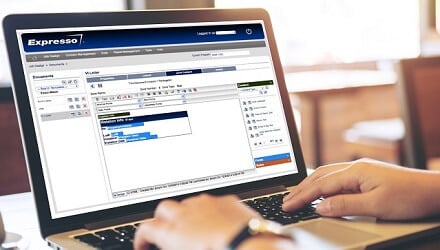Nobody likes paperwork, even the virtual kind–until you need it. Then you need it right away.
That’s the premise that drives Expresso’s archive. We keep all of the print, email and text communications you develop and produce in Expresso® safely in the cloud for at least 90 days. And you or your customers retrieve them as needed, in the original format, in real-time.
There’s a lot more flexibility and choice beyond this standard. You can tap into other options and set archive periods to suit your compliance, reporting and customer service needs:
Archive period: You pick the length of time you need to save documents. We have some clients that keep mortgage-related communications for 30 years.
Search and view: This built-in Expresso interface makes it easy to find documents. During implementation you decide what fields to index, such as last name and account number, and then use these to search for emails, texts or printed records.
Presentment: The archive period determines how long we can present documents in ExpressoPay® or a third-party portal. During that time frame, consumers can access them in real-time for account management, tax reporting and other needs while customer service representatives can instantly find documents to help customers.
API: Archived documents can be presented to third-party systems via API as well. If you prefer to retrieve documents into your own system of record instead of using Expresso for access, you can connect to Expresso via API.
Remail: Clients can opt to turn on a resend or remail feature. Once you’ve located a record, just click to add it to the queue and produce it with your next live file.
Reporting: The archive period also drives the window of time for running reports on those documents and the files that generated them.
PDF Return Files: Some clients prefer to keep all Expresso-generated communications within their internal document retention systems. We can return PDFs of the records via SFTP. Even so, some clients extend the Expresso archive period to take advantage of reporting and presentment features.
Using Expresso’s Archive
Once you’ve set up your requirements, it’s easy to take advantage of the archive’s features.
- Finding records
To reach the archive, click the report management tab, and select Search and View. From this screen, input the customer name, account number or other data that is preconfigured to trigger a search. - Availability
As soon as any job is processed, you can find records in reports via search and view. - Access
Clients determine who in their organizations has access to the archive and what screens they can see.
For presentment, the Nordis implementations team works with customers to configure their system to the Expresso standard APIs. When consumers click to view a statement, Nordis produces it in the same format as the original email, text or document.
For more information on using APIs, please check out our previous newsletter article Expresso Tips & Tricks: Use APIs to Add Customer Value and Efficiency
- Analyzing trends
The extensive reporting features allow clients to sort archived information to track trends, such as the number of bounced emails. Custom reports can be configured using any of the data elements received as part of the file.
To leverage the reporting options, see our newsletter article Expresso Tips and Tricks: Reporting.
Expresso’s archive is a valuable source for improving your operations and compliance as well as enhancing customer and employee experience. Please contact me at sales@nordsitechnologies.com if you’d like to learn more about maximizing all of the archive’s features. See What Nordis Can Do for You.
